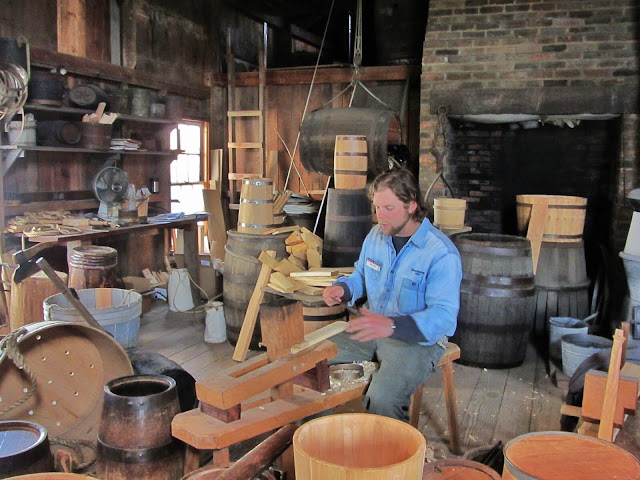The Mystical Allure of the Sea
ON THE HISTORY HIGHWAY, Day 41:
Manchester, CT to Middletown, RI In choosing to focus on history as we travel America's highways and byways on this trip, we have repeatedly been reminded that all too often, our notion of history is focused through the lens of political events. Thanks to a bounty of specialized museums, we are broadening our scope and learning to appreciate other aspects of our national story.
At Mystic, CT, today we visited Mystic Seaport, which bills itself as "the Museum of America and the Sea." Not only does the museum have an extensive collection of ships and boats, it is also home to a complete 19th century seafaring village. The shops of the village house artisans who ply their trades as their predecessors did in the 1800s.
space
 |
| A cooper at work |
space
 |
| Mystic's on-site shipyard |
space
 |
| Charles W. Morgan in restoration |
space
Among its collection of maritime equipment and memorabilia, the museum gave visitors an up-close look at a lighthouse light. Actually, this was what is called a fourth order lighthouse lens. Invented by Frenchman Augustine Fresnel in 1822, the revolutionary Fresnel lens design employs curved panes of glass to concentrate light from a single source into a beam that can be projected a great distance.
space
 |
| A 4th order Fresnel lens for a lighthouse |
Mystic Seaport is certainly a place where you can learn as much maritime history as you have time available. We were there for a couple of hours but could have easily filled four or more hours if we had arrived sooner. Tickets were a bit pricy at $24 ($21 with a AAA discount), but with all the village had to offer, we were not disappointed.
space
TUESDAY, 24 APRIL 2012




